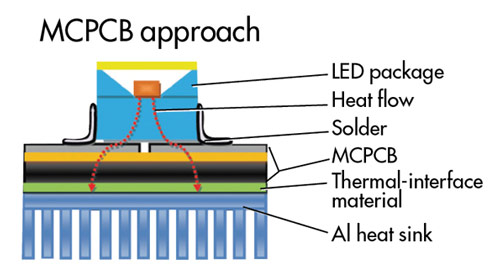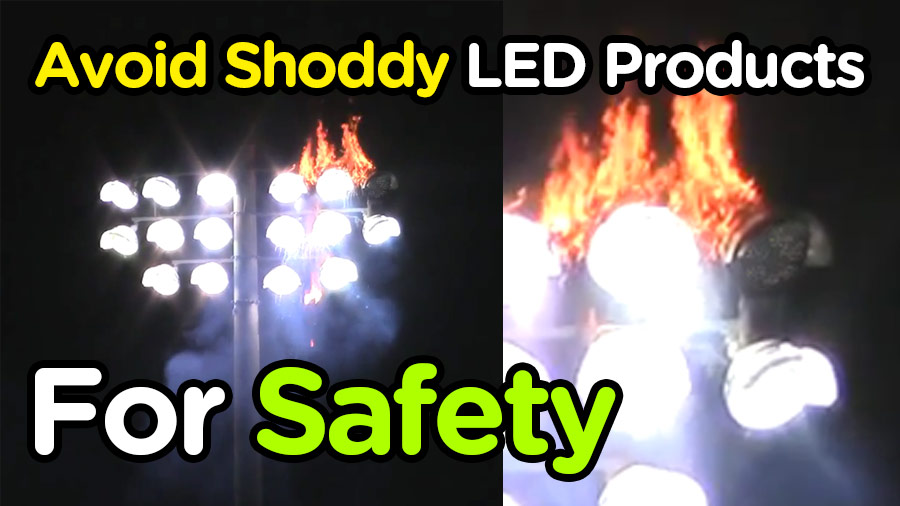Avoid Shoddy LED Stadium Lights that Catch Fire

It is dangerous to choose the stadium lighting products with poor heat dissipation design. If the heat generated is not channelized away quickly, the bird’s nest or branches on the lamps will be ignited. This article is sharing with you the basis of heat sink inside LED lights and how to avoid the low-quality, shoddy products.
How to Conduct the Heat Away inside LED Chips?
 The heat generated from the LED chips is passed along the aluminum heat sink via soldering and other interface materials. If one of the parts is poorly designed such as discontinuity in poor manufacturing process, the heat will be accumulated inside the LED package and cause overheating, which eventually burn the chips.
The heat generated from the LED chips is passed along the aluminum heat sink via soldering and other interface materials. If one of the parts is poorly designed such as discontinuity in poor manufacturing process, the heat will be accumulated inside the LED package and cause overheating, which eventually burn the chips.
 On the other hand, for the heat sink part, it should provide large surface area to dissipate the heat to surroundings. These flood lamps caught fire because their lighting engineers underestimate the heat generated of the product and use the poorly designed heat sink in the products. We should take extra precaution if we are going to buy the stadium lights having this design.
On the other hand, for the heat sink part, it should provide large surface area to dissipate the heat to surroundings. These flood lamps caught fire because their lighting engineers underestimate the heat generated of the product and use the poorly designed heat sink in the products. We should take extra precaution if we are going to buy the stadium lights having this design.
Thermal Conductivity
Thermal conductivity indicates that how fast the materials conduct heat, it has the unit of watt per meter kelvin. The table below summaries the thermal conductivity of different materials.
| Material | Thermal Conductivity (W/mK) |
|---|---|
| Diamond | 1000 |
| Silver | 406 |
| Copper (Pure) | 385 |
| Yellow Brass | 115 |
| Copper Brass (Copper 70% + Zirconium 30%) | 111 |
| Copper Bronze (Copper 75% + Tin 25%) | 26 |
| Gold | 315 |
| Aluminum | 205 |
| Magnesium | 159 |
| Zinc | 116 |
| Iron | 79.5 |
| Tin | 65 |
| Stainless Steel | 45 |
Copper alloy, aluminum and tin are the common interface materials between the LED package and heat sink in the LED lighting industry. Although diamond and silver have the relatively higher thermal conductivity (1000 and 406 W/mK respectively), the cost of using these material is very high, which makes the lamp cost become unreasonable. If someone told you that they have the “superconducting” material having 200,000 to 300,000 W/mK, or even higher, they deserve the Nobel Prize.